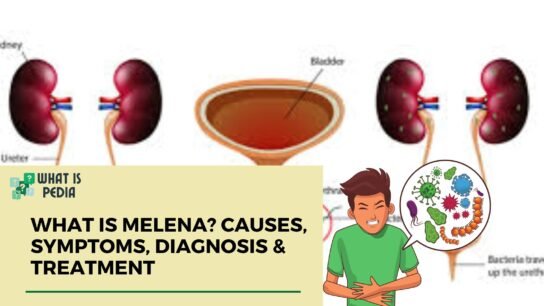Key Facts About Bipolar Disorder
Risk Factors of Bipolar Disorder is a mental health condition with complex characteristics and diverse impacts. Here are some crucial facts to understand about this disorder:
Prevalence and Onset
Bipolar disorder affects about 1% of the global population, with the typical onset occurring in late adolescence or early adulthood. The mean age of onset is around 25 years, but symptoms can start appearing much earlier or later in some individuals.
Impact on Daily Life
The disorder significantly influences daily functioning, potentially impacting relationships, employment, and academic performance. Those affected may experience substantial disruptions in their personal and professional lives during manic or depressive episodes.
Treatment and Management
While there is no cure for bipolar disorder, it can be effectively managed with medication, psychotherapy, and lifestyle adjustments. Long-term treatment is usually necessary to control the symptoms and may include mood stabilizers, antipsychotic medications, and antidepressants, alongside therapy techniques such as cognitive-behavioral therapy (CBT) and psychoeducation.
Risk Factors
Genetics play a critical role in the risk of developing bipolar disorder, with a higher likelihood if a direct family member also has the condition. Environmental factors, such as stress and traumatic life events, can trigger the onset of symptoms or exacerbate existing conditions.
Co-Occurring Conditions
Individuals with bipolar disorder often have co-occurring mental health issues, including anxiety disorders, substance abuse, and attention deficit hyperactivity disorder (ADHD), which can complicate the diagnosis and management of bipolar disorder.
Understanding these key facts can help in recognizing the need for professional evaluation and treatment, and in supporting those who are dealing with the disorder to manage their symptoms effectively and maintain a stable, fulfilling life.
An Overview of Bipolar Disorders
Bipolar disorder, once known as manic-depressive illness, is a complex mental health condition characterized by significant mood swings, including emotional highs (mania or hypomania) and lows (depression). This blog explores the risk factors, symptoms, and treatment strategies for bipolar disorder, with a focus on enhancing awareness and understanding of this challenging condition.
What is Bipolar Disorder?
Bipolar disorder is a mental health condition characterized by extreme mood swings that include emotional highs (mania or hypomania) and lows (depression). These mood swings can affect sleep, energy, activity, judgment, behavior, and the ability to think clearly. Episodes of mood swings may follow a pattern, but they can also occur randomly.
Types of Bipolar Disorder
- Bipolar I Disorder: This type is marked by manic episodes lasting at least seven days or severe mania requiring immediate hospital care. Depressive episodes are also typical, generally lasting at least two weeks.
- Bipolar II Disorder: Consists of patterns of depressive episodes and hypomanic episodes (which are less severe than full mania and do not require hospitalization) but no full-blown manic episodes.
- Cyclothymic Disorder: Involves periods of hypomanic and depressive symptoms lasting for at least two years in adults or one year in children and adolescents. The symptoms are less severe than those of full mania or major depression.
What are the symptoms of bipolar disorder?
Bipolar disorder is characterized by a diverse range of symptoms that can vary in intensity and duration, depending on whether an individual is experiencing a manic, hypomanic, depressive, or mixed episode. Recognizing these symptoms is critical for timely diagnosis and effective management.
Manic or Hypomanic Episode Symptoms
- Elevated Mood: An unusually cheerful or irritable mood that is significantly different from the person’s baseline.
- Increased Energy and Activity: A surge in energy leading to hyperactivity, restlessness, and a drive to accomplish more than usual.
- Reduced Need for Sleep: Feeling rested after only a few hours of sleep, often without the typical fatigue that follows sleep deprivation.
- Racing Thoughts and Rapid Speech: Thoughts may speed through the mind, making it challenging to concentrate. Speech can become rapid, making it hard for others to follow.
- Inflated Self-Esteem: An exaggerated sense of self-confidence or grandiosity, sometimes leading to unrealistic planning or behavior.
- Impulsive Behavior: Engaging in risky activities, such as overspending, unprotected sex, or reckless driving, without fully considering the consequences.
Depressive Episode Symptoms
- Persistent Sadness: Feelings of hopelessness, despair, or deep sadness that last for an extended period.
- Low Energy and Fatigue: A marked decrease in energy levels, often accompanied by a sense of physical and mental exhaustion.
- Loss of Interest: Diminished interest in activities once found enjoyable, leading to withdrawal from social interactions.
- Sleep Disturbances: Either insomnia or hypersomnia, where one might sleep too little or too much.
- Changes in Appetite or Weight: Noticeable fluctuations in weight or appetite, either as a loss or an increase.
- Difficulty Concentrating: Challenges with focus, decision-making, and memory, which can interfere with daily tasks.
- Feelings of Guilt or Worthlessness: Overwhelming negative self-perception and a belief that one is a burden to others.
- Suicidal Thoughts: In severe cases, thoughts about death or suicide may occur, requiring immediate professional attention.
Mixed Episode Symptoms
- Co-occurrence of Symptoms: In mixed episodes, symptoms of both mania and depression appear simultaneously. For instance, an individual might have high energy levels coupled with feelings of deep sadness.
- Emotional Turbulence: Rapid mood shifts can occur, leading to confusion and emotional instability.
- Agitation and Irritability: A combination of elevated mood and depressive symptoms can manifest as severe irritability or agitation.
Each symptom’s presence and intensity can vary among individuals, and not every person will experience all these symptoms. Recognizing these signs is the first step toward seeking help and managing the condition effectively.
Different Types of Bipolar Disorder
Bipolar disorder manifests in several forms, each defined by the nature, duration, and intensity of mood episodes. Understanding these variations is essential for effective diagnosis and management.
Bipolar I Disorder
Bipolar I is characterized by manic episodes lasting at least seven days or severe manic symptoms that necessitate immediate hospital care. These manic episodes are often accompanied by depressive episodes, typically lasting at least two weeks. However, depressive episodes are not necessary for the diagnosis if the manic episodes are extremely pronounced.
Bipolar II Disorder
Bipolar II is defined by a pattern of depressive episodes interspersed with hypomanic episodes. Unlike Bipolar I, the hypomanic episodes in Bipolar II do not reach the full severity of manic episodes and do not require hospitalization. This type is often more challenging to diagnose because the hypomania can be subtle and may be perceived as a period of high productivity and creativity.
Cyclothymic Disorder
Cyclothymic disorder, or cyclothymia, involves numerous periods of hypomanic symptoms and periods of depressive symptoms lasting for at least two years in adults or one year in children and adolescents. The symptoms do not meet the full diagnostic criteria for hypomanic or depressive episodes but are significant enough to impair functioning and cause distress.
Rapid-Cycling Bipolar Disorder
Although not officially categorized as a separate type, rapid-cycling is a specifier that can be applied to any of the bipolar disorder types. It is marked by four or more mood episodes (manic, hypomanic, or depressive) within a single year. Rapid-cycling can be particularly challenging to manage due to the frequency and unpredictability of mood swings.
Other Specifiers
Further specifiers like “with mixed features” or “with anxious distress” can be added to describe additional symptoms that may occur during mood episodes, providing more detailed descriptions to tailor treatment effectively.
Each type of bipolar disorder requires a nuanced approach to treatment and management, emphasizing the importance of a thorough and accurate diagnosis by a mental health professional. Understanding the specific type of bipolar disorder an individual has is crucial for developing an effective treatment plan that addresses their unique needs.
How is Bipolar Disorder Diagnosed?
Diagnosing bipolar disorder involves a detailed assessment by a mental health professional who will use several strategies to understand the symptoms and their impact on the individual’s life. The diagnosis is primarily based on direct interviews, medical histories, and, in some cases, observations from family members or close associates. Here’s how the process typically unfolds:
Clinical Interview
The cornerstone of diagnosing bipolar disorder is a comprehensive clinical interview that includes a thorough review of symptoms, duration, and the impact on daily functioning. Psychiatrists or psychologists conduct these interviews to gather insights into the patient’s mood, behavior patterns, and lifestyle.
Medical and Psychiatric History
This includes gathering information about any past mental health issues, treatments, and responses to previous treatments. It also involves discussing any family history of bipolar disorder or other psychiatric conditions, which can provide clues about potential risks and the nature of the disorder.
Mood Charting
Patients may be asked to keep a daily record of their moods, sleep patterns, and other factors that could influence their condition. This mood charting helps to identify patterns and triggers that are crucial for a correct diagnosis.
Psychological Assessment
Some mental health professionals might use standardized psychological tests or questionnaires to help assess symptoms. These tools are designed to evaluate mental well-being, the presence of mood disorders, and the specific type of mood episodes.
Rule Out Other Causes
Diagnosing bipolar disorder also involves ruling out other medical or psychological conditions that could mimic or contribute to mood disorder symptoms. This may include physical examinations and lab tests to exclude medical conditions like thyroid disease, brain imaging studies to rule out neurological disorders, and screening for substance use which can also cause significant mood changes.
Diagnostic Criteria
Finally, clinicians use specific criteria from the Diagnostic and Statistical Manual of Mental Disorders (DSM-5), which outlines the signs and symptoms required for a diagnosis of bipolar disorder. This manual provides a standard classification and approach to diagnosing mental health conditions based on observable symptoms.
Specialist Consultation
In some cases, consultation with other specialists, such as neurologists or endocrinologists, might be necessary to further explore the symptoms and exclude other causes.
Proper diagnosis is crucial as it guides the entire course of treatment and management. It ensures that the treatment plan is appropriately tailored to the individual’s specific symptoms and needs, improving the overall outcome of the disorder.
Can Bipolar Disorder Be Prevented?
Preventing bipolar disorder is not straightforward due to its complex interplay of genetic, environmental, and psychological factors. However, while it may not be possible to completely prevent the onset of bipolar disorder, there are strategies that can reduce the risk and mitigate the severity of episodes for those who have or may be predisposed to the condition.
Understanding Genetic Risks
Bipolar disorder has a significant genetic component. Individuals with a family history of bipolar disorder or other psychiatric illnesses are at higher risk. While genetic predisposition cannot be changed, awareness of this risk can lead to earlier identification and treatment, which can improve outcomes.
Early Intervention
For those at high risk, early intervention can be crucial. This includes monitoring for early symptoms of mood instability or other psychiatric symptoms. Early intervention programs may help delay or reduce the severity of full-blown bipolar disorder by providing timely treatment and support.
Lifestyle Management
Maintaining a healthy lifestyle can help manage symptoms and possibly reduce the risk of developing severe bipolar episodes. This includes:
- Regular Sleep Patterns: Disruptions in sleep are significant triggers for manic and depressive episodes. Maintaining a regular sleep schedule can help stabilize mood.
- Stress Reduction: Chronic stress can precipitate the onset of psychiatric illnesses, including bipolar disorder. Techniques such as mindfulness, yoga, and regular exercise can help manage stress effectively.
- Avoiding Substance Abuse: Alcohol and drugs can trigger or worsen mood episodes. Avoiding these substances can help in managing the condition more effectively.
Psychoeducation
Educating those at risk and their families about the signs and symptoms of bipolar disorder can lead to earlier diagnosis and treatment. Understanding the disease also helps in reducing stigma and promoting better adherence to treatment plans.
Regular Monitoring and Treatment Compliance
For those diagnosed with bipolar disorder or those at high risk, regular monitoring by healthcare professionals is crucial. This ensures that any changes in mood or behavior are addressed promptly. Compliance with prescribed treatment plans, including medications and psychotherapy, is essential for managing the condition.
While these strategies do not guarantee prevention, they can significantly impact the management of the condition and improve the quality of life for those affected. Early detection and proactive management are key components in the ongoing effort to mitigate the impact of bipolar disorder.
Potential Complications of Bipolar Disorder
Bipolar disorder is associated with several potential complications that can affect every aspect of an individual’s life. Understanding these complications is crucial for managing the disorder effectively and mitigating its impact.
Impact on Relationships
The intense mood swings characteristic of bipolar disorder can strain personal relationships. During manic episodes, impulsive behaviors and irritability can lead to conflicts, while depressive episodes can lead to withdrawal and disengagement, making it difficult for individuals to maintain close relationships.
Occupational Challenges
The fluctuating energy levels and concentration difficulties associated with bipolar disorder can impair an individual’s ability to perform consistently at work. This may lead to job instability and financial problems if not managed effectively with appropriate workplace accommodations and treatment.
Substance Abuse
Individuals with bipolar disorder are at an increased risk of substance abuse. The use of alcohol or drugs can be a coping mechanism for the emotional turmoil caused by the condition. However, substance abuse complicates treatment and can exacerbate symptoms, leading to a more severe course of the illness.
Physical Health Issues
Bipolar disorder is linked to various physical health problems, including heart disease, thyroid problems, and obesity. These issues are often the result of poor lifestyle choices during depressive or manic episodes, such as neglecting diet and exercise or the side effects of medications used in treatment.
Increased Risk of Suicide
The depressive phases of bipolar disorder can lead to suicidal thoughts and behaviors. The risk is particularly high during mixed episodes, where the energy and impulsivity of mania combine with the depressive mood, increasing the likelihood of suicide attempts.
Legal and Financial Problems
Manic episodes often lead to poor financial decisions, such as extravagant spending sprees or unwise business ventures, which can result in significant debt or legal issues. This aspect of the disorder requires careful management and planning to prevent long-term financial damage.
Cognitive Effects
Long-term bipolar disorder can lead to cognitive decline, affecting memory, executive functioning, and attention. These cognitive issues can impact daily functioning and independence, making sustained treatment and cognitive rehabilitation strategies essential components of care.
Understanding these complications underscores the importance of comprehensive treatment strategies that address both the psychological and physiological aspects of bipolar disorder. Effective management involves medication, psychotherapy, lifestyle changes, and support systems to help individuals lead fulfilling lives despite the challenges of the disorder.
Conclusion
Understanding bipolar disorders is crucial for effective management and support. By recognizing the causes, symptoms, and types of bipolar disorder, individuals and healthcare providers can better navigate the complexities of this mental health condition. Effective treatment plans, incorporating both medical and therapeutic strategies, play a vital role in managing the disorder, improving quality of life, and maintaining long-term stability.
For further detailed insights and resources on bipolar disorders and other mental health topics, visit Whatispedia. This platform provides comprehensive, expert-reviewed content that empowers readers with knowledge and practical information to address a wide range of psychological and emotional health issues.







